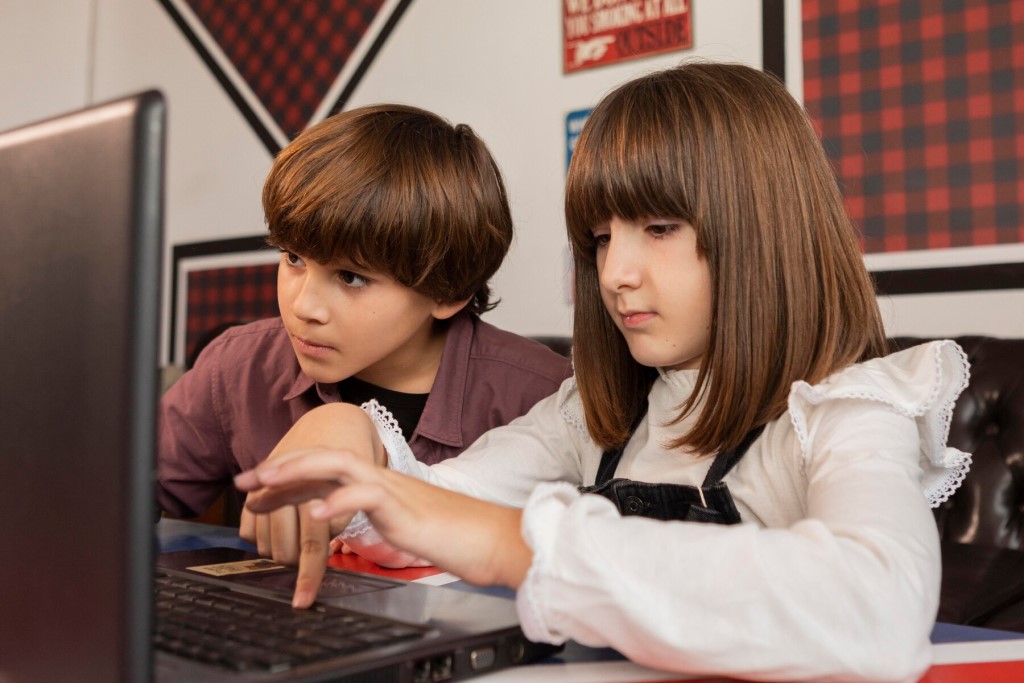
Internet technology is a vast repository of knowledge that children can tap into to learn about any subject they’re interested in. In today’s fast-changing digital world, thinking critically can help them deal with complex issues and solve problems. They need to analyze, evaluate and distinguish between credible and unreliable sources.
What is Critical Thinking?
Critical thinking is a cognitive process of objectively analyzing information, situation, and concepts to make an informed decision. It involves questioning assumptions, evaluating evidence, and considering alternative perspectives and solutions using logic to draw conclusions.
The steps in the critical thinking process can vary depending on the specific purpose or context, but the general framework that’s used are the following:
Identifying the Problem
Identify and determine the problem that needs to be analyzed to decide.Gathering Information
Gather relevant information, evidence, and facts specific to the problem that will aid you in understanding the situation better.Evaluation
Evaluate your findings thoroughly to determine whether your collected information is from reliable sources. Find out the strengths and weaknesses of your findings.Interpretation
Interpret the collected data and evidence using logic and reasoning to make sense of the problem and form a conclusion.Drawing a Conclusion
Draw a conclusion based on your research and make a reasonable decision. If, by any chance, you’re unable to make sense of the problem, consider alternate theories.Considering Alternative Perspectives
It’s always a good idea to think from a different point of view. Consider alternate theories and look at the problem from a different perspective to finally make an informed decision.Making a Decision
Based on your data and evidence, use logic and reasoning to decide how to solve the problem.Reflecting on the Process
After making the decision, reflect on the entire process and see how and where you can improve your critical thinking skills in the future.
How Can Technology Help Develop Critical Thinking Skills in Children?

In today’s digital world, children are surrounded by technology. As a result, technology has become an integral part of our lives, and children grow up to be more tech-savvy than their parents.
Incorporated in offices and schools, technology impacts our everyday lives in both good and bad ways. Some argue that technology can be detrimental towards children lowering their thinking capability. However, by using the right tools, technology can help children enhance their ability to think critically and solve problems. Here are some ways on how technology can develop and improve critical thinking skills in children:
Access to Internet
With the Internet at their fingertips, children can access a world wide web of information and resources. Learning how to use information and distinguishing between reliable and unreliable sources can help them understand, evaluate and solve problems independently. Learning to search for information, conduct research, and solve problems can aid children in developing critical thinking skills and becoming more independent learners.Interactive Apps and Games
Puzzle, strategy, and adventure games can help children develop critical thinking skills. Interactive apps and online games require problem-solving, using a strategy, thinking about other alternate methods, and finally, making an informed decision. For instance, 2048station is a simple number game where you use arrow keys to join the number tiles and merge them to become 2048.
Several interactive and strategic games are available online for children to develop critical thinking skills, which are fun to play. Video games such as Super Mario or Homescapes can boost brain power.Multimedia Presentations
Online presentations are a great way to develop critical thinking skills. They research the topic, note important points and prepare a multimedia presentation. They get to explore the various layouts and designs to make their presentation stand out from others. After preparing and evaluating information, they can present it clearly and concisely. Children can practice with the help of a timer countdown to provide a clear and precise presentation.
An example includes Digital Storytelling Group Activities. It allows students to use multimedia (images, videos or audios) to narrate their stories, document personal events, and inform and instruct. In the end, other children can ask questions on the topic, allowing the presenters to reflect, analyze and solve their queries. This interactive group learning activity can foster critical thinking skills with the help of technology.Online Forums
Online discussion forums are a great way to boost children’s confidence. It is a platform that allows them to share their ideas and receive feedback on their work, listen to others’ opinions, and develop their arguments in a respectful manner. Therefore, encouraging children to participate in online discussion forums can improve not only their cognitive skills but also their communication skills as well.Coding and Programming
Coding teaches children how to think to solve problems creatively and logically. It breaks down complex problems into small manageable parts, where children develop solutions using logic and reasoning. They also learn how to debug and troubleshoot, an essential aspect of critical thinking. Integrating coding and programming in the classroom does not only teach them how to think, but it teaches them to think differently.Computer-based Scaffolding
Scaffolding is a learning strategy where instructors deliver lessons in small segments and provide less support to children so they can grasp the contents and materials independently.
Computer-based scaffolding has several forms:
- Conceptual Scaffolding: This involves learning activities that help children understand a particular topic until they can integrate that concept into different contexts. It helps children to decide what to consider when learning and guides them toward key concepts.
The benefits of using this technique are that it reduces the cognitive load and provides paths for knowledge retrieval. It also facilitates higher-order learning, that is, analyzing and evaluating information. - Strategic Scaffolding: This type of scaffolding helps children to find different methods and alternatives to solve problems. For instance, guiding questions can be provided to aid in critical thinking. This technique requires constant and regular dialogue with the learner to help simplify and organize information.
- Metacognitive Scaffolding: This method helps students to think about what they are learning and then later reflect on what they have learned, that is, doing a self-assessment. This technique enhances a child’s planning skills and promotes higher-order learning.
Metacognitive Scaffolding can further be divided into categories:
- Planning Scaffold: This is where a learning goal is established, and a plan and strategies are developed to achieve those goals.
- Monitoring Scaffold: This is where children can track their progress and monitor potential solutions.
- Evaluating Scaffold: This is where children can evaluate their results based on their planning and strategies, and depending on the result, they can revise and modify their strategy if needed.
- Planning Scaffold: This is where a learning goal is established, and a plan and strategies are developed to achieve those goals.
- Motivational Scaffolding: This technique uses prompts and guides to assist children in reducing frustration, reinforce efforts and help them to persevere.
- Procedural Scaffolding: Procedural Scaffolding helps children use appropriate tools and resources effectively. It helps them navigate the course environment and engage in learning activities.
- Conceptual Scaffolding: This involves learning activities that help children understand a particular topic until they can integrate that concept into different contexts. It helps children to decide what to consider when learning and guides them toward key concepts.
Technology-based Environment
Children tend to pick up temperaments, behaviors, interests, and other characteristics from their environment. Therefore, a technology-based environment will enable them to play, participate, express themselves, and cultivate their skills in a safe and engaging way.
What to Do When Introducing Technology to Children?
As exciting as it can be when using technology, it can also be a powerful tool. So when you begin introducing children to technology, make sure to do the following things:
- Provide clear instructions and use general directions.
- Allow the child’s curiosity to take over.
- Provide opportunities for the child to explore.
- Ask open-ended questions.
- Listen, observe, and wait.
After mastering basic technological skills, allow children to think independently and solve the problem themselves. Guide them wherever necessary but allow them to come to the solution alone. A good rule of thumb is not to intervene immediately when the child is struggling with the problem.
Final Thoughts
While many frowns on the idea of providing gadgets to the young, guiding and teaching them basic technological skills will become a powerful tool for your children. Critical thinking is an invaluable skill to help them lead successful lives personally and professionally. With the right approach and in moderation, technology can help children develop problem-solving, analyzing, evaluating, decision-making, and communication skills, setting them up for success in school and beyond.